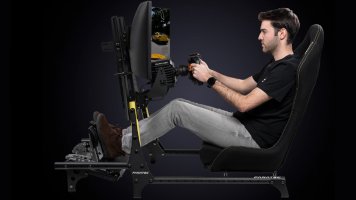Alright I shot 3 videos of me moving my mouse in cs:go while also recording the screen.
I recorded at 118.734 fps, slowed them down to 40.0% in sony vegas.
That's 47.5 fps playback speed.
Since I'm a noob with video editing, my jump-steps are 16.67ms (59.940 fps ntsc).
Anyway I jump-stepped forward until my hand was moving and then jumped forward until the game started moving.
FPS Limiter at 59.99 fps: 6-7 steps = 6*16.67 = 100ms in vegas. 6 frames in reality translate to 6*0,0084ms (118 fps) = 50ms (yeah that's logical... 118 fps is kinda 2x 60 fps

f*ck me lol).
Anyway so:
59.99 fps = 6 frames, 50ms input lag
59.90 fps = 3 frames. 25ms input lag
59.70 fps = Also 3 frames but it felt snappier.
I guess I forgot to try without the limiter on... Let's do it again...
Without limiter it's 8 frames and with limiter to 59.70 fps it's 3 frames.
This isn't really that accurate but it shows that there's a certain "border" which flips everything from 6-8 frames input lag down to about 3 frames.
Of course I did this all with pre-rendered-frames at 1 (ultra low latency mode blahblah).
And now that I think about it.. screw it, I'm gonna do it with 3 pre-rendered-frames (default).
EDIT: yep, it's about 10-14 frames now. Can't really see it...
59.70 overwrites pre-rendered-frames at least to some amount it seems, I counted 6 frames now.
btw it was all planned a bit differently... About 1.5 years ago I recorded frametimes with vsync on in Assetto Corsa and it looked like this: (53.3 fps vs 60 fps in the limiter):
I could also record it with fraps and had tic tac graph like in afterburner jumping between 30 and 60 fps.
Sadly I couldn't find a way to get this again.. fraps, afterburner, a lot of different games all clearly stuttered inconsistently, showing one frame a second time every few frames.
But today all measurement tools simply said "these are 45 fps". Yeah.. my monitor is showing it's hz counter, it's 60 Hz and I've got no tearing.. Who do you try kidding?!











